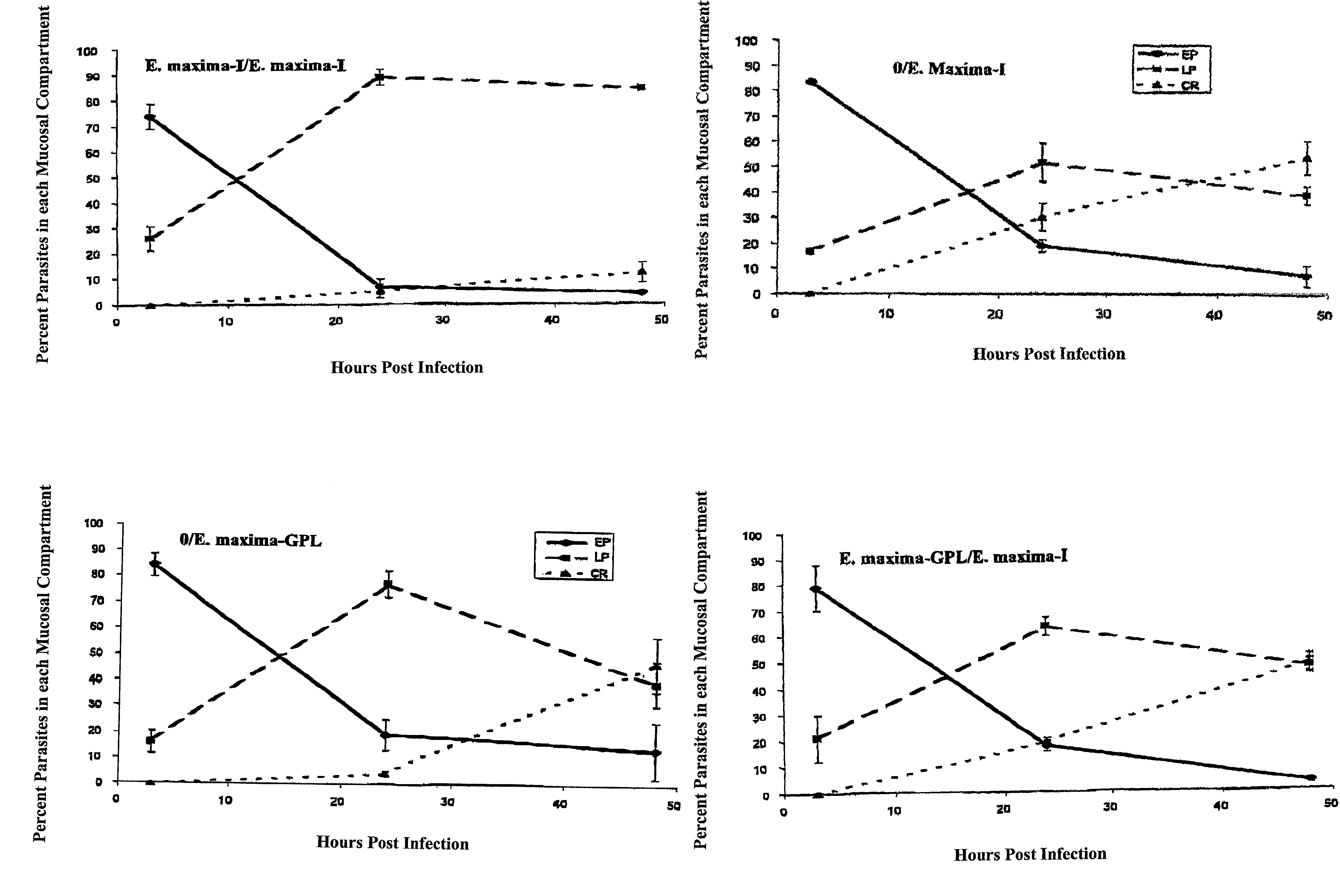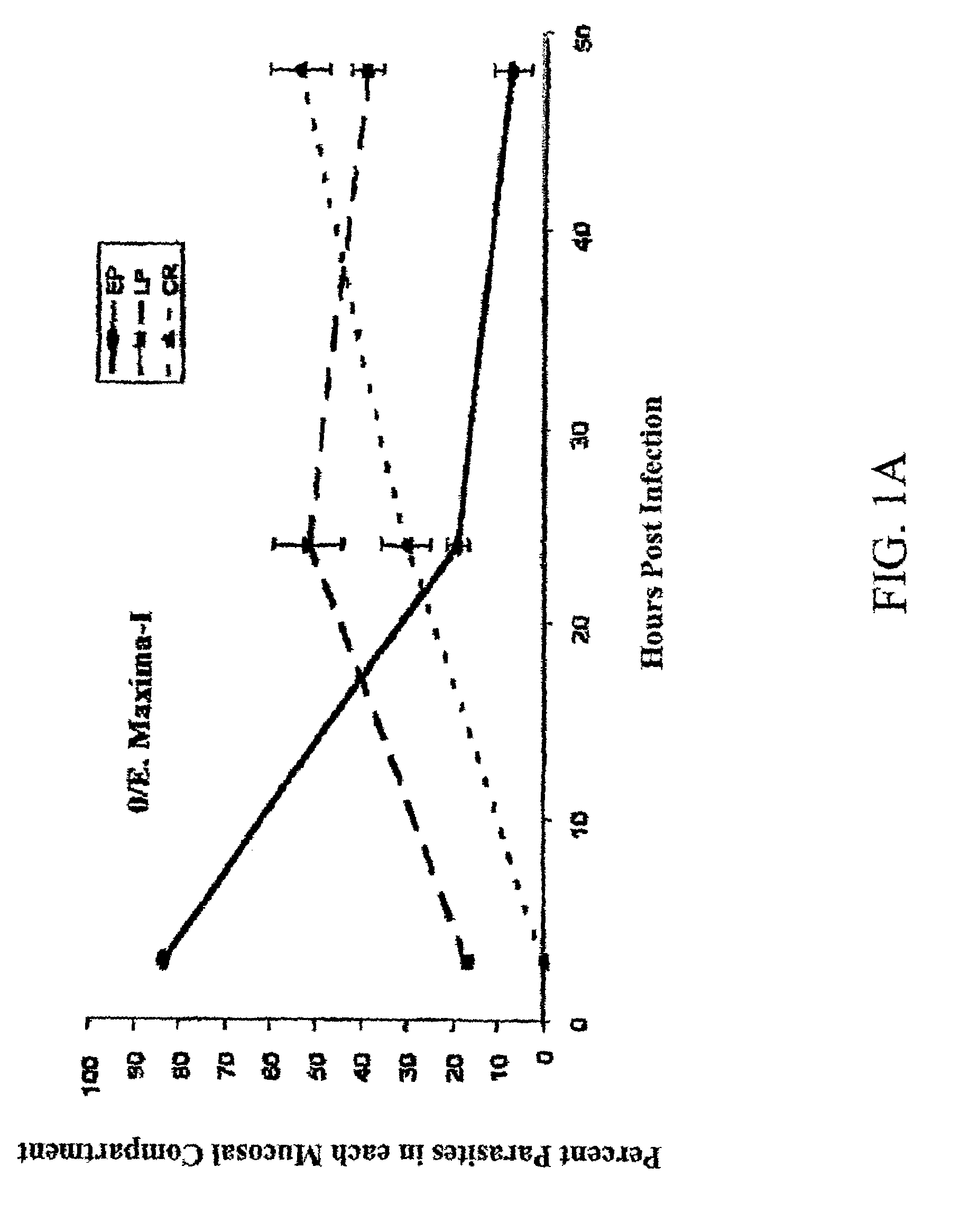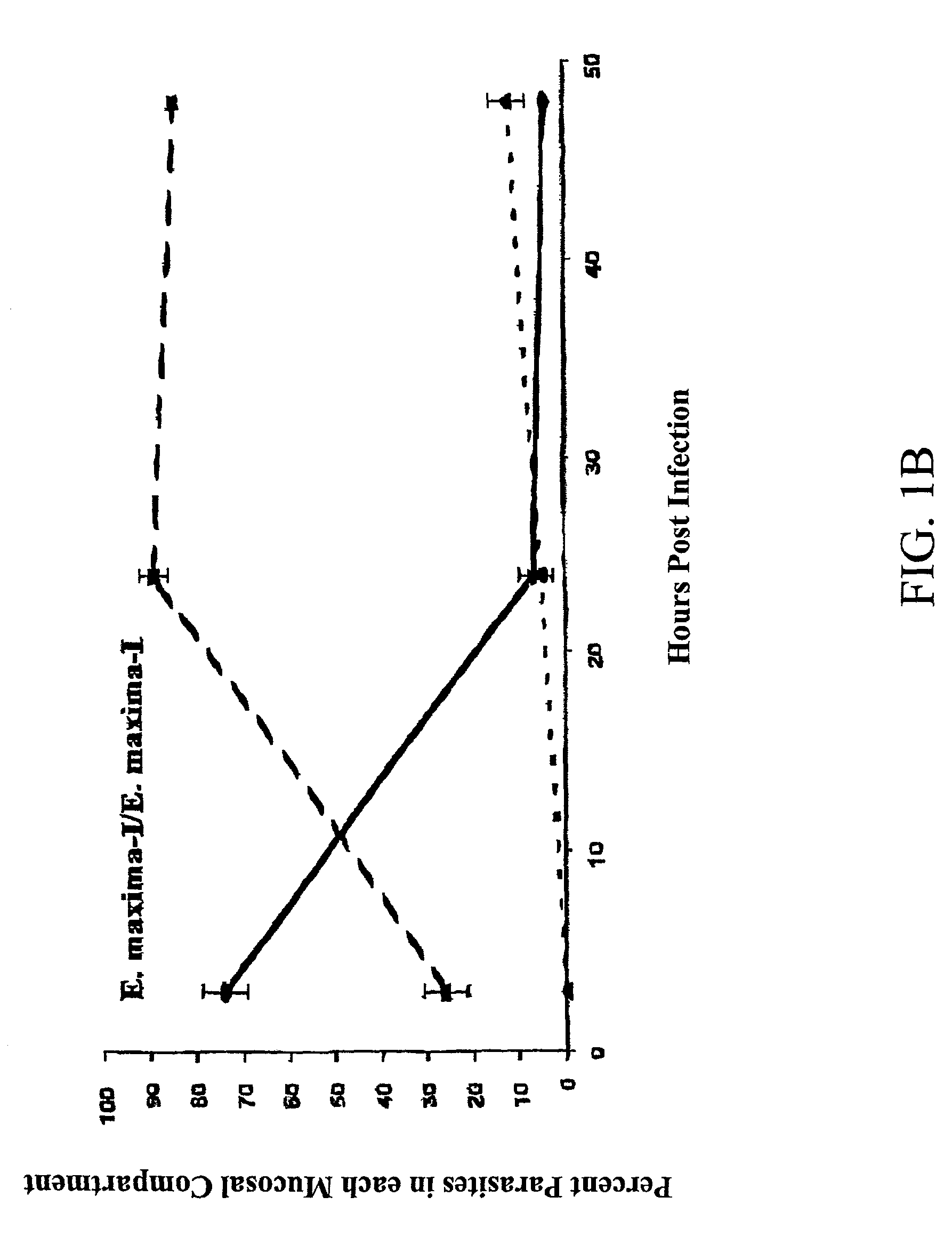Production of an immunovariant strain of Eimeria maxima contributes to strain cross-protection with other Eimeria maximas
- Summary
- Abstract
- Description
- Claims
- Application Information
AI Technical Summary
Benefits of technology
Problems solved by technology
Method used
Image
Examples
example 1
Preparation of Parasites
[0037]Coccidial oocysts of E. maxima strains were purified free of bacterial and fungal contamination by treatment with 5.25% sodium hypochlorite solution at 0°–4° C. for 15 min followed by extensive washing with cold water. Oocysts were then separated from other debris by centrifugation over a cushion of 0.6M sucrose in a Sorvall HB-4 rotor for 5 min at 5000 rpm at 40° C. Oocysts float on top of the cushion while most of the other debris is pelleted at the bottom of the centrifuge tube. The purified oocysts were again washed thoroughly with cold water and were stored at 4° C. in Hank's medium containing 10 units / ml penicillin and 10 μg / ml streptomycin.
[0038]For all strains except GPL, at least 40 E. maxima oocysts identified by size and yellowish oocyst walls were isolated using hand-drawn pipettes attached to a micromanipulator, pooled, and passaged twice through coccidia-free chickens to obtain a sufficient quantity of sporulatd oocysts. All strains were c...
example 2
Cross-immunity Trials with E. maxima-GLP and E. maxima-I
[0039]One-day-old male chickens of a roaster line were obtained. All chicks had been vaccinated at the hatchery against Marek's disease, Newcastle disease and infectious bronchitis. To immunize against E. maxima, chicks were randomly selected and placed 10 per cage in battery brooder cages at 1 day of age and inoculated orally with 2500 oocysts of individual strains of E. maxima in 0.1 ml water or with 0.1 ml water as sham inoculated controls. Feed and water were available ad libitum throughout the experiment. At 10 days of age, chicks were challenged orally with 25,000 oocysts of each strain of E. maxima in 1 ml water or given 1 ml water as unchallenged controls.
[0040]Chicks were euthanized 6 days after challenge and the intestines were examined for coccidial lesions (Johnson & Reid. 1970. Exp. Parasitol. 28: 30–36). Individual body weights were obtained on the day of challenge (10 days of age) and 6 days later in order to cal...
example 3
In vivo Selection of the Immunovariant Strain E. maxima-I
[0041]Birds immunized by oral infection with the Guelph strain of E. maxima (E. maxima-GLP) were challenged with the Florida strain. The resulting oocysts were sporulated and then passaged through additional birds immunized against the Guelph strain. Four such passage collections, using oocysts collected from each preceding passage, were used to challenge the next group of immunized birds and selected for a strain of E. maxima, designated E. maxima-I, that was totally immunovariant from the E. maxima-GPL. Birds immunized against the Guelph strain no longer recognized the resulting immunovariant E. maxima strain, E. maxima-I.
PUM
| Property | Measurement | Unit |
|---|---|---|
| Angle | aaaaa | aaaaa |
| Angle | aaaaa | aaaaa |
| Angle | aaaaa | aaaaa |
Abstract
Description
Claims
Application Information
 Login to View More
Login to View More - R&D
- Intellectual Property
- Life Sciences
- Materials
- Tech Scout
- Unparalleled Data Quality
- Higher Quality Content
- 60% Fewer Hallucinations
Browse by: Latest US Patents, China's latest patents, Technical Efficacy Thesaurus, Application Domain, Technology Topic, Popular Technical Reports.
© 2025 PatSnap. All rights reserved.Legal|Privacy policy|Modern Slavery Act Transparency Statement|Sitemap|About US| Contact US: help@patsnap.com



